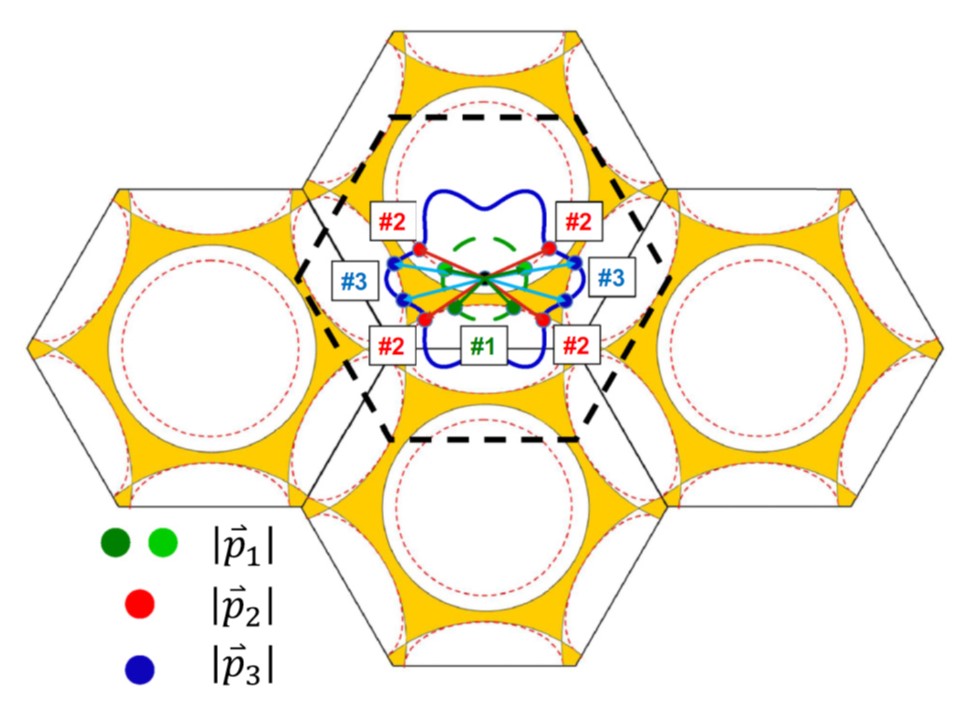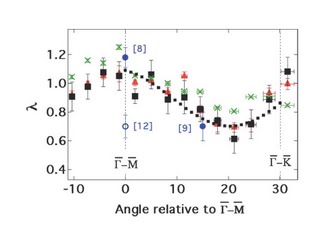
|
Determining Detail Contributions from Phonon Modes on Electron-Phonon Coupling on Be(0001) SurfacesElectron-phonon coupling (EPC) has been known to be enhanced on surfaces of materials. However, it is less understood that if it is mainly due to the low dimensionailty or due to the broken symmetry. Here, we use high-resolution, high quality angle-resolved photoemission spectroscopy (ARPES) data, collected in Advanced Light Source in Lawrence Berkeley National Laboratory, to determine individual contributions from each phonon mode (either bulk or surface phonon modes). With our detail analysis and comparison, with assistance of energy and momentum conservation laws, we concluded that on Be(0001) surfaces, the EPC was strongly enhanced due to the presence of the surface phonon modes (with the bulk phonon contribution is unchanged to that of the bulk EPC). Furthermore, in addition to the contributions from bulk and surface phonon modes, the momentum-dependent EPC is found to be another importance source of strong EPC enhancement. The conclusion indicates that for Be(0001) surfaces, the strong EPC on the surfaces are mainly due to the broken symmetry, rather than the low dimensionality. Our methodology provides a great example for studying electron-boson coupling for systems with broken symmetry. Read more: TeYu Chien et al., Phys. Rev. B 92, 075133 (2015). |

|
Anisotropic Electron-Phonon Coupling on a Circular Fermi Contour: Be(0001) surface stateElectron-phonon coupling (EPC) plays a decisive role on determining physical properties of materials. Examples are electrical transport, thermal transport, as well as superconductivity. The pairing symmetry of the EPC in simple metals was believed to be isotropic (s-wave), which is the main reason to exclude EPC from the candidates for pairing mechanism in type-II superconductors. Surprisingly,on Be(0001) zone-centered surface state, anisotropic EPC were revealed by measuring the kink behavior in the energy-momentum dispersion relation using angle-resolved photoemission spectroscopy (ARPES) at different directions in momentum space. This result indicates that even for an isotropic electronic state in simple metal, anisotropic EPC is still possible. Reexamination of the concept of the EPC is needed. Read more: TeYu Chien et al., Phys. Rev. B 80, 241416(R) (2009). |

